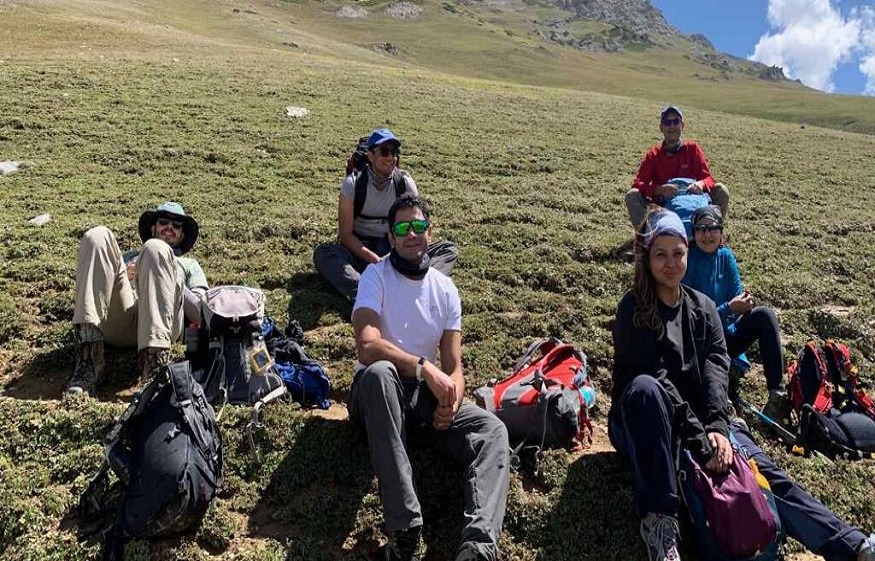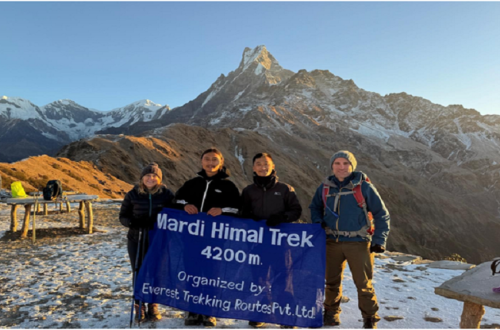Mountain hiking is an exciting and rewarding activity. But how do you prepare for a trek to have a successful experience? In this article, we will try to answer this question by addressing physical preparation, the choice of equipment and many other essential aspects.
Why go on a trek?
A trek, also called trekking, is a hike lasting several days or even weeks, which generally takes place in the mountains or in wild areas. It allows you to explore often inaccessible territories and to live an immersive experience in the heart of nature. But why embark on a trek? Here are some good reasons that could convince you to try it.
Discover spectacular natural landscapes
A trek is a unique opportunity to discover breathtaking panoramas and marvel at spectacular natural landscapes. By moving away from the beaten track, you will have the chance to explore wild, unspoiled and authentic areas, and admire breathtaking views of mountains, valleys, lakes and forests.
Trek reconnecting with nature
Trekking allows you to immerse yourself in nature and strengthen your bond with it. You will become aware of the beauty and fragility of our environment, and learn the importance of respecting it more. In addition, contact with nature has beneficial effects on well-being and mental health , promoting relaxation, stress reduction and escape from everyday life.
Meeting personal challenges
A trek is an adventure that requires perseverance, endurance and a certain amount of courage. By embarking on a trek, you will be able to take on personal challenges and perhaps push your limits, which can be very rewarding and fulfilling. The satisfaction of achieving your goals and overcoming the obstacles encountered along the way will strengthen your self-confidence.
Improve your physical condition
Trekking is an intense physical activity that uses many muscles and develops your endurance. By training for a trek, you will improve your physical condition, strength and agility. Regular physical activity is beneficial for your general health and can help reduce the risks of cardiovascular disease, obesity or diabetes .
Live enriching human experiences
Finally, a trek often offers the opportunity to meet people and share unforgettable moments with your fellow travelers, whether they are friends, family or new companions met along the way. You will also be able to discover and interact with the people who live locally, learning about their culture, traditions and way of life. These enriching human experiences will allow you to keep memories and build strong bonds .
How to prepare physically for a trek?
To fully enjoy your trek, good physical preparation is essential. Here are some tips for training before departure and adapting your program according to your level and the difficulty of the chosen route.
What are the best exercises to do for training?
Brisk walking or hiking on hilly terrain to strengthen your muscles and improve your endurance. Include some walking sessions with a loaded backpack to get used to the weight you will be carrying during the trek.
Muscle strengthening exercises, especially for the legs, back and abs. Consider incorporating squats, lunges and core exercises into your routine.
Stretching to improve your flexibility and prevent injuries. Practice targeted stretches for your calves, thighs and back regularly.
It is recommended to start training at least two to three months before departure, gradually increasing the intensity and duration of your sessions. Adapt your program according to your starting level and the requirements of the chosen trek. Do not hesitate to consult a professional to establish a personalized training plan.
How to choose the right equipment for a trek?
Choosing the right backpack is crucial for a successful trek. Choose a model that is suited to the duration and conditions of your hike, with enough capacity to carry all your gear. A comfortable, well-fitting backpack, with a good carrying system and ergonomic shoulder straps, is essential to avoid back pain and facilitate your progress.
What clothes and shoes should you choose for a mountain trek?
For a mountain trek, it is important to choose clothing that is adapted to the weather conditions and the type of terrain you will encounter. Here are some tips for equipping yourself:
Choose technical, breathable and quick-drying clothing to avoid the feeling of humidity and regulate your body temperature.
Adopt the three-layer technique: a first layer close to the body to wick away perspiration, a second insulating layer to retain heat, and a third waterproof and windproof layer to protect you from the elements.
Don’t forget a change of clothes, especially socks, to avoid blisters and irritation.
Consider accessories such as gloves, a hat, a neck warmer and sunglasses to protect yourself from the cold and UV rays.
When it comes to shoes, it is essential to choose a pair that is suitable for the duration and terrain of your trek. Opt for waterproof and comfortable hiking shoes, with good ankle support and a non-slip sole. Don’t hesitate to try them on in store and wear them several times before leaving to “break them in” to your feet and avoid any discomfort.




